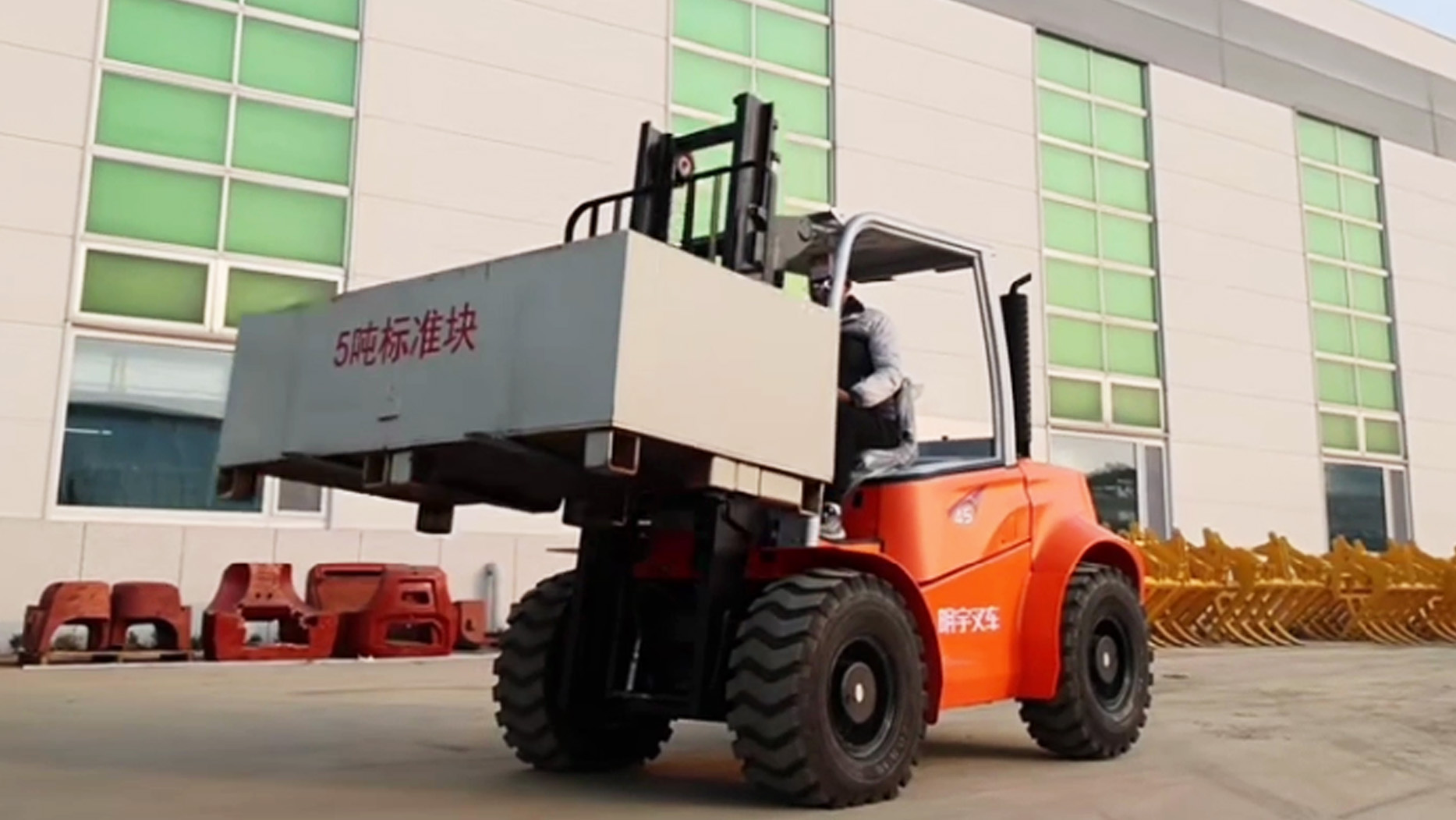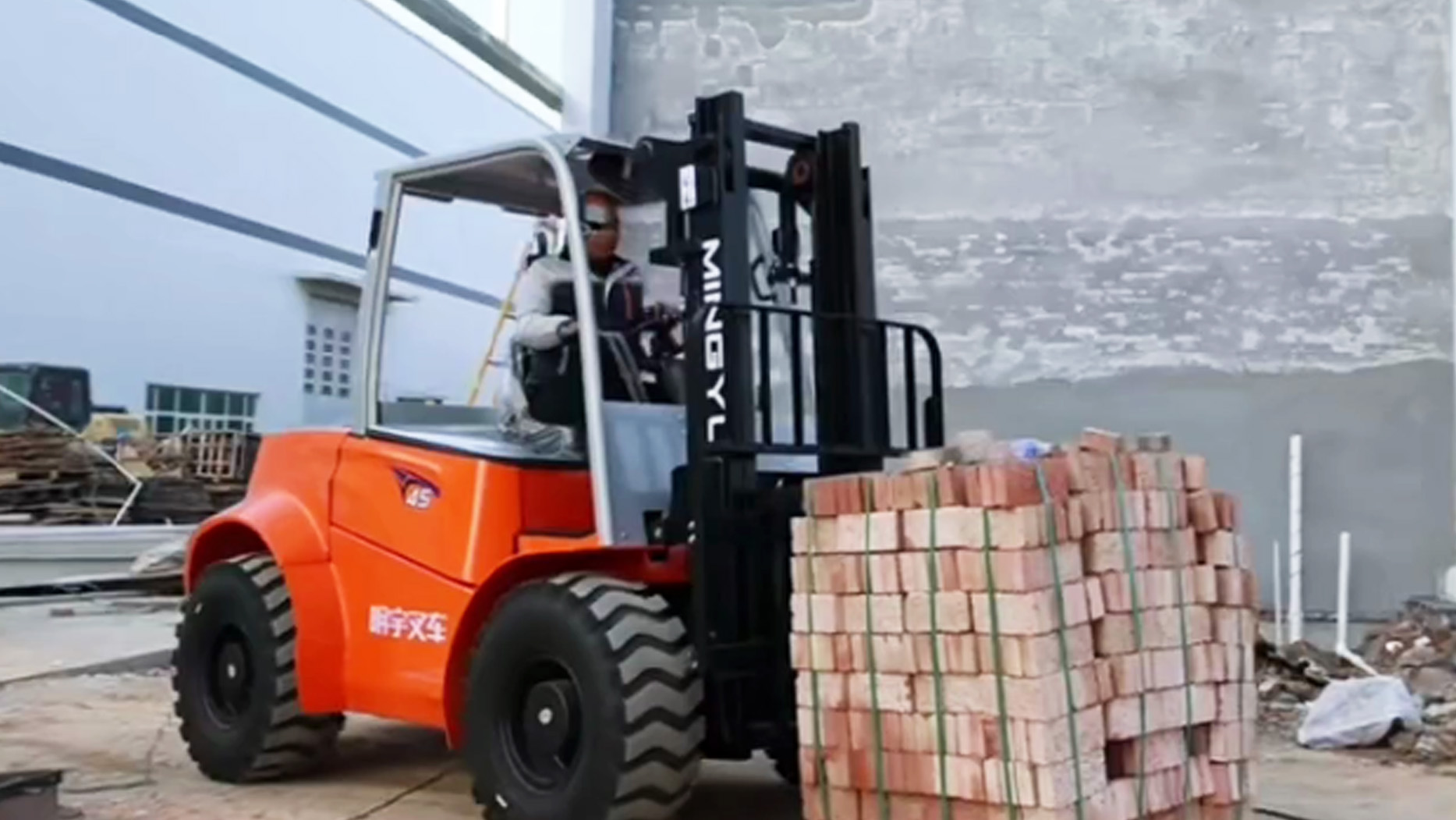In the construction industry, the movement of heavy materials is a critical part of the daily workflow. Whether it’s moving bricks, steel beams, or large concrete slabs, construction sites require efficient, reliable equipment to ensure smooth operations. Among the many types of machinery used, forklifts stand out as essential tools for material handling. Forklifts provide versatility, speed, and safety, which help construction teams save time, reduce labor costs, and improve productivity. This article explores the different applications of forklifts in the construction industry, highlighting the types of forklifts used, their specific applications, the benefits they bring to construction projects, and the challenges operators face on the job site. Additionally, we’ll look into innovations that are transforming forklift technology and how these advancements are changing the way construction projects are executed.
Types of Forklifts Used in the Construction Industry
Standard Counterbalance Forklifts Standard counterbalance forklifts are one of the most common types found on construction sites. These forklifts have a simple design with a load-bearing fork at the front, supported by a counterweight at the rear. They are used to lift and transport materials over short to medium distances. Advantages: Easy to maneuver in tight spaces. Ideal for flat, smooth terrains like warehouses or paved surfaces on construction sites. Cost-effective and reliable for general lifting tasks. Limitations: Not suitable for rough or uneven terrains. Lower lifting height compared to other specialized forklifts.
Rough Terrain Forklifts Rough terrain forklifts are designed for outdoor construction sites, often on uneven ground. These forklifts have large, heavy-duty tires that provide better traction and stability on rugged terrain. They are ideal for moving materials across gravel, dirt, or uneven surfaces typically found on construction sites. Advantages: Excellent stability and traction on rough terrain. Ideal for outdoor use and construction sites with uneven surfaces. Can handle larger loads and reach higher lifting heights than standard forklifts. Limitations: Limited maneuverability on smooth, flat surfaces. More expensive and larger in size.
Telehandlers (Extended Reach Forklifts) Telehandlers, or telescopic forklifts, are forklifts equipped with a telescoping arm that allows operators to reach great heights or distances. They are often used in construction for lifting materials to elevated positions or across large work areas. Advantages: Ability to lift materials to great heights and reach over obstacles. Often equipped with various attachments (buckets, hooks, and winches) for specialized tasks. Versatile and can be used for many functions, from lifting to digging. Limitations: Can be more difficult to maneuver in tight spaces. Requires more skill and training to operate safely.
Key Applications of Forklifts in the Construction Industry
Material Handling and Transport Forklifts are commonly used for transporting materials such as bricks, lumber, concrete blocks, and steel beams across construction sites. These materials are often too heavy or bulky for manual labor to handle efficiently. Forklifts offer a faster and more cost-effective solution by reducing the time spent moving materials from one location to another. Using forklifts to transport materials improves overall workflow, helping construction teams meet deadlines and stay on schedule. The ability to move large quantities of materials quickly also reduces the amount of manual labor required, ultimately saving on labor costs.
Loading and Unloading Materials Forklifts are indispensable for unloading materials from delivery trucks and loading them onto construction sites. They ensure that heavy materials like steel, pipes, and pre-fabricated components are offloaded efficiently and safely, preventing delays caused by manual unloading methods. This process is crucial for maintaining a steady flow of materials on-site, ensuring that workers have what they need when they need it, and that trucks are loaded/unloaded quickly to maintain productivity.
Elevating and Positioning Heavy Materials Forklifts also play a key role in positioning and elevating heavy materials. For example, beams, large pipes, and pallets of concrete are lifted to precise locations where cranes or other machinery might not have easy access. Forklifts, particularly telehandlers, can extend their reach to position materials at high altitudes, which is invaluable for tasks like building frames or setting up scaffolding.
Site Preparation and Clearing Forklifts can assist in site preparation, such as moving debris, clearing space, or even lifting and stacking construction materials in an organized manner. By optimizing material storage and movement, forklifts help prepare the site for other construction machinery and workers, improving the overall site layout and workflow.
Advantages of Using Forklifts in Construction
Improved Efficiency and Productivity Forklifts significantly increase the efficiency of material handling on construction sites. They reduce the need for manual lifting, making it easier to move heavy and bulky materials. With forklifts, workers can transport materials in less time, leading to quicker project completion and fewer delays. By reducing the amount of manual labor required, forklifts also help prevent worker fatigue and injuries, allowing crews to focus on higher-value tasks.
Cost Savings Though the initial investment in a forklift can be substantial, the long-term savings they offer are significant. Forklifts reduce the need for multiple workers to handle materials manually, cutting down on labor costs. Their ability to work efficiently and transport materials quickly also helps prevent costly project delays, improving overall profitability.
Versatility and Flexibility Forklifts are incredibly versatile machines. They can be used for a variety of tasks, such as lifting, carrying, unloading, and stacking materials. Additionally, different attachments can be added to forklifts to further expand their functionality, such as lifting platforms, buckets, and forks for different material types. This versatility makes forklifts an essential tool in many different stages of construction, from ground preparation to building structure.
Challenges of Using Forklifts in Construction
Terrain Limitations Although rough terrain forklifts are designed to handle uneven surfaces, even these machines have limitations. Construction sites with particularly rugged or soft soil may challenge the stability and efficiency of forklifts. In extreme cases, it may be necessary to use other types of equipment, such as cranes or bulldozers.
Weather and Environmental Factors Extreme weather conditions can impact forklift performance. Rain, snow, or excessive heat can cause forklifts to lose traction or reduce battery life. Construction companies must ensure that their forklifts are equipped to handle various environmental conditions or face potential downtime.
Operator Training and Safety Forklifts are powerful machines that require trained operators to ensure safety. Without proper training, operators risk accidents and damage to materials, equipment, or the construction site. Construction companies must invest in forklift operator training programs to ensure the safety of their workers and the smooth operation of the equipment.
Innovations and Technological Advancements in Forklifts for Construction
Electric and Hybrid Forklifts With the growing demand for sustainable construction practices, electric and hybrid forklifts are becoming more popular. These forklifts reduce emissions and are quieter than their gas-powered counterparts, making them suitable for use in environments with noise restrictions. They also require less maintenance due to fewer moving parts.
Telematics and Fleet Management Modern forklifts come equipped with telematics systems that allow fleet managers to track machine performance in real-time. These systems provide valuable insights into fuel consumption, maintenance schedules, and operator behavior. By integrating telematics, construction companies can optimize their fleet’s efficiency and reduce operational costs.
Automation and Robotics Automation is slowly making its way into the construction industry, with forklifts being no exception. Autonomous forklifts, which can navigate construction sites and perform tasks without human intervention, are being developed. These innovations could drastically reduce labor costs and improve site safety by eliminating human errors.
Best Practices for Using Forklifts in Construction
Routine Maintenance To ensure optimal performance, forklifts should undergo regular maintenance, including checking fluid levels, inspecting tires, and ensuring that hydraulic systems are functioning properly. Proper maintenance minimizes downtime and maximizes the machine’s lifespan.
Safety Protocols Forklift operators should always wear safety gear, including helmets and high-visibility clothing. Additionally, operators should follow site-specific safety protocols, such as checking their surroundings before moving materials, ensuring proper load balancing, and operating the forklift at safe speeds.
Training and Certification Forklift operators must undergo proper training and certification to operate the equipment safely. Regular refresher courses can help ensure that operators remain up-to-date on best practices and safety regulations.
Conclusion
Forklifts are indispensable tools in the construction industry, offering a range of benefits from increased efficiency and productivity to improved safety and cost savings. Whether used for material handling, unloading, or elevating heavy loads, forklifts play a critical role in ensuring that construction projects run smoothly. While challenges like terrain limitations and weather conditions can impact forklift performance, advancements in technology and proper operator training are helping to mitigate these issues. By investing in the right forklifts and maintaining them properly, construction companies can boost their operations and achieve better results.
Post time:Apr.10.2025



